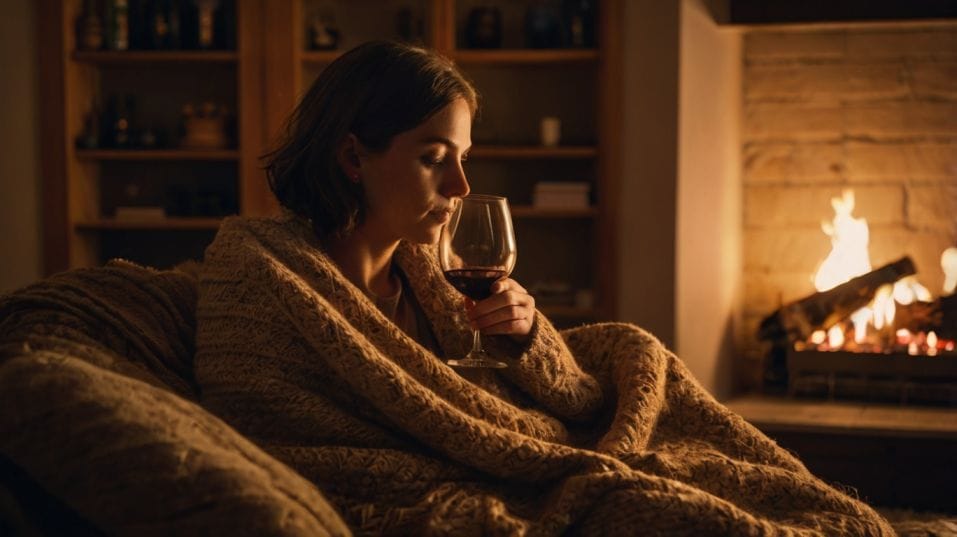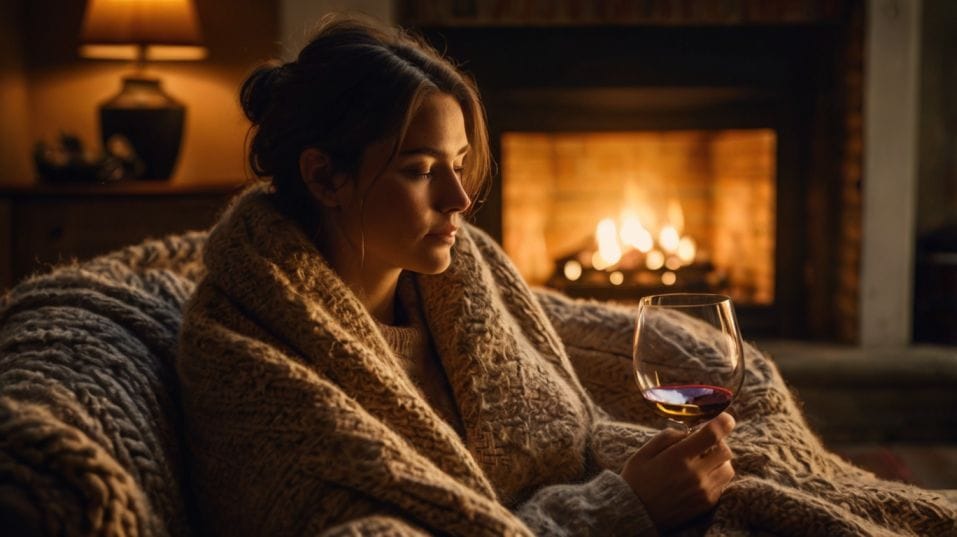The Best Wines for a Cozy Night In
Discover the best cozy-night wines that match your mood, not just your meal. Learn what to sip, how to choose, and why it matters.

What if your wine matched your mood, not just your meal? On quiet nights in, when the pace slows and the noise fades, the best bottles don’t shout—they settle in beside you. For new wine lovers, this is where the journey deepens.
You start noticing not just taste, but texture. Not just notes, but nuance. The right wine for a cozy night in doesn’t impress—it belongs. And it teaches you to trust your own sense of pleasure.
What “Cozy” Really Means in a Glass
“Cozy” in wine isn’t a style—it’s a sensation. It’s warmth without weight, richness without fatigue. It’s wine that unfolds slowly, with layers you notice more as the evening goes on. That might sound poetic, but it comes down to structure.
Body, texture, and balance are the backbone of a cozy wine. You're looking for smooth tannins, moderate to full body, and fruit that feels ripe but not overly sweet.
Think of it like volume: you want wines that speak clearly, not shout. The pleasure should be persistent but never pushy.
Wines that excel in these moments aren’t showy or sharp. They have presence, not punch. That’s why balance matters more than intensity.
Acidity should lift the wine, not tighten it. Tannins should shape the experience, not dry it out. Alcohol should warm you—not weigh you down. You want wines that invite the next sip without making you race to finish the glass.

Red Wines That Unwind With You
Red wines are the obvious starting point for a cozy evening—partly because of their richness, and partly because they simply feel right when the lights dim. But not all reds are created equal.
Pinot Noir
Pinot Noir is your go-to if you want clarity and calm. Look for bottles from regions like Oregon’s Willamette Valley, Burgundy, or even cooler parts of New Zealand.
You’ll get soft red fruit, gentle earthiness, and enough acidity to stay bright. These wines are rarely heavy but almost always layered, especially with a little air.
Merlot
Merlot, especially from old-world regions like Bordeaux’s Right Bank, offers a rounder, more plush experience.
When done well, it feels smooth and approachable with dark plum, cocoa, and a touch of herbal lift. It’s the red that melts into the background—but rewards attention if you give it.
Syrah
Syrah brings a more brooding energy, but don’t confuse it with bulk.
A Syrah from the Northern Rhône or a cooler-climate California producer offers smoke, pepper, and structure without being overwhelming. The savory notes pair beautifully with colder nights and spicier dishes.
Gamay
If you're feeling adventurous, Gamay from Beaujolais is a sleeper hit.
Lighter in body, often served slightly chilled, it’s vibrant and joyful without losing complexity. It’s ideal for relaxed evenings when you want freshness with a touch of depth.
White Wines That Wrap You Up
White wines aren’t always associated with comfort—but that’s a mistake. The right white can feel just as indulgent and warming as any red, especially when chosen with care.
Chardonnay
Chardonnay leads here, especially those that undergo lees aging or partial oak fermentation. These techniques give the wine texture—think creamy, nutty, even brioche-like notes—while retaining freshness.
A good Chardonnay won’t taste like buttered popcorn unless it’s poorly made or overworked. What you want is tension: richness offset by just enough acidity to keep it moving.
White Rhône Blends
White Rhône blends (like Marsanne, Roussanne, and Viognier) offer weight, aromatics, and a waxy mouthfeel that makes them ideal for sipping slowly.
They tend to show stone fruit, wild herbs, and sometimes a bit of floral lift—perfect for evenings when you’re not rushing anywhere.
Riesling
Riesling, particularly off-dry styles from Germany’s Mosel or Rheingau regions, might surprise you.
A small touch of sweetness paired with electric acidity creates balance and energy, not cloying sugar. It’s the kind of wine that can transition from savory snacks to dessert without missing a beat.
Chenin Blanc
If you're drawn to more herbal or mineral tones, look to Chenin Blanc from the Loire Valley.
It’s versatile, deeply textured, and often has a honeyed note without being sweet. Perfect for sipping with salty cheeses, roasted nuts, or even creamy pastas.
Choose with Confidence, Not Noise
A smart wine choice doesn’t start with a brand or a rating—it starts with knowing what you want to feel. Are you looking for something grounding? Something bright? Something soft? Once you name the mood, choosing becomes intuitive.
Look at alcohol content as a useful signal. Wines in the 12.5%–13.5% range are typically more balanced. They’ll warm you up, but they won’t dominate the evening.
Higher-alcohol wines can feel cozy too, but they need structure to stay elegant. Wines above 14.5% often lean toward bombastic unless thoughtfully made.
Origin matters. Cool-climate regions—like Burgundy, Mosel, Oregon, Alto Adige, or the Finger Lakes—produce wines with built-in freshness. That’s critical for cozy nights. It keeps richness from becoming flabby and adds lift to the finish.
If a label mentions “native yeast fermentation,” “unfined,” or “minimal sulfur,” it suggests less manipulation.
That doesn’t guarantee quality, but it does imply the wine will taste more like where it came from—and that kind of authenticity tends to show well in relaxed, personal settings.
Avoid wines that are aggressively oaked, overripe, or saturated with additives. They can feel heavy, confusing, or fatiguing. You’re not drinking for impact—you’re drinking for insight.
Let the Wine Come to Life
You don’t need fancy equipment, but a little intention goes a long way. Open your wine early. Let it breathe, especially reds. Just 20 minutes in the glass can round out rough edges and unlock new aromas.
Serve your reds slightly cooler than room temperature (about 60–65°F), and don’t serve whites ice-cold. That subtle shift in temperature reveals texture and detail—two things you absolutely want when you’re sipping slowly.
Use a proper wine glass if you can. A tulip-shaped glass with a tapered rim helps concentrate aromas and control flow. But the real point is to pay attention. Taste.
Swirl. Sip again. See what changes. That’s how your palate grows—through quiet repetition, not flashy bottles.
Final Thoughts
Wine gets more interesting when you slow down with it. On a cozy night in, you’re not performing for anyone. You’re tuning in. The right bottle will meet you there—not with fireworks, but with clarity and calm.
Choose wines that feel generous, not showy. Pay attention to how they move, how they finish, how they change. That’s how you learn to taste more deeply, and how you build real confidence—glass by glass.
Tonight, make it simple. Open something with character. Settle into the moment. And let wine become not just a drink, but a part of your rhythm.




